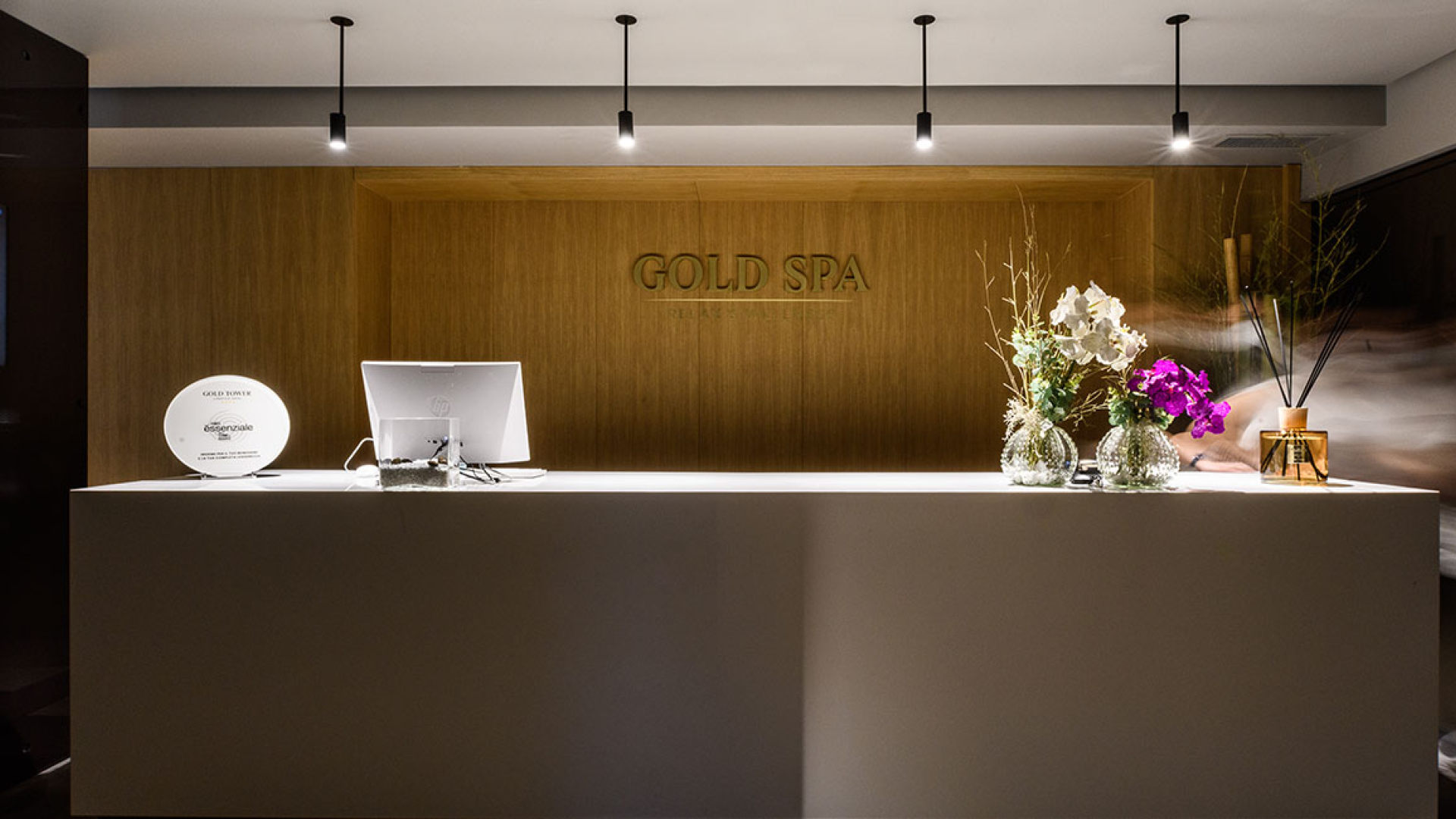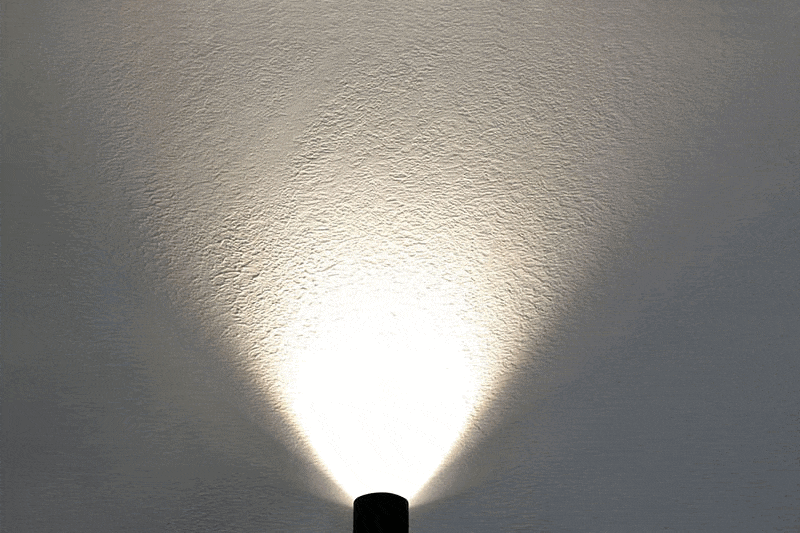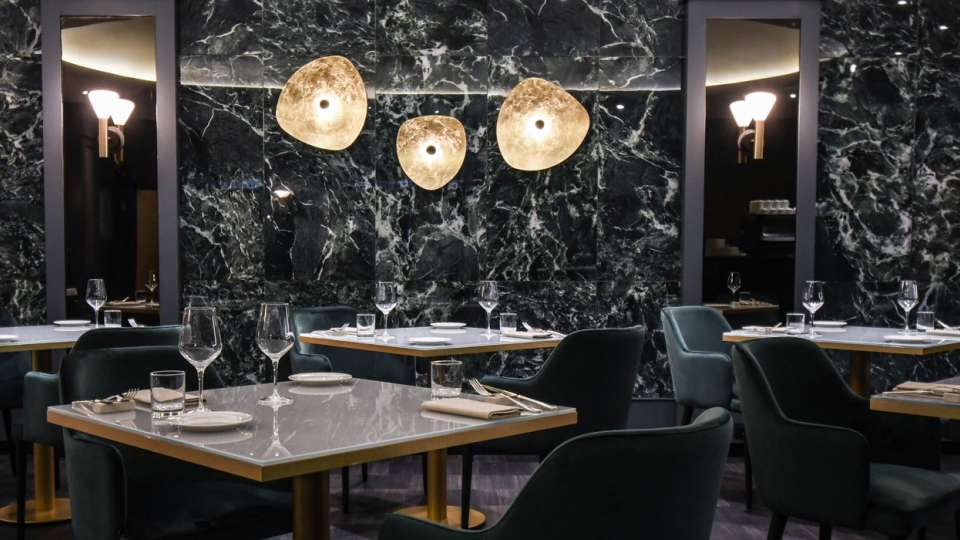
Inside an LED, illumination emanates from a diode enclosed within a casing known as primary optics. This casing influences the light's form, but the resulting beam tends to be broad, diminishing in intensity as it extends from the origin, rendering it less suitable for some applications.
Additional optical components are incorporated alongside the primary optics to produce more scattered or concentrated light, depending on the desired design specifications. These are necessary elements to focus light rays and maintain beam intensity while improving light distribution.
In addition to directing light, secondary optics offer creative ways to play with light beams and create different effects, thus improving the effectiveness of a lighting system in the environment.
In most cases, it is possible to find a reference regarding the optics in the product data sheets, identified with a series of values indicating the degrees of the beam angle.
Commercially available are LEDs with optics starting from a value less than 10°, therefore very narrow, up to one greater than 60°, therefore very wide.

Secondary optics can be divided mainly into two families:
Lenses use principles of refraction and TIR - Total Internal Reflection. A notable advantage of employing a lens is the accuracy in regulating the direction of the emitted light beam.
The photometric solid distribution and light output of the system vary depending on the materials and surface treatment of the lens.
Reflectors utilize the principle of reflection; however, with each reflection of the light beam on the reflector surface, there is a loss due to the absorption of some of the light by the material upon which it is reflected.
The photometric distribution primarily depends on the geometry of the reflector, its surface treatment, and the physical properties of the material coated inside it. However, this type of optical system typically exhibits lower efficiency than a lens. Not all the light emitted by the LED can be efficiently reflected, leading to uncontrolled results.
There are also hybrid systems that use lenses and reflectors together and systems that use diaphragms affixed to the secondary optics, which can shape the light.
Lenses made from thermoplastic materials, with the most prevalent options being:
Reflectors for LEDs, also fabricated using thermoplastic materials, specifically:
An additional processing step, known as metallization, is required. This step involves depositing a reflective layer onto the surface of the reflector material itself.
It is hard to determine a priori which type of secondary optic is superior to others because the evaluation depends on the specific application, the light source used, and the design specifications.
Lenses and reflectors are manufactured for high-power and mid-power LEDs, as well as COB LEDs. Therefore, the selection of optics is influenced only partially by the LED type.
Secondary optics with reflectors have lower luminous efficacy than those offered by a lens because, with each bounce of the beam of the reflector surface, the reflector will absorb some of the beams, thus some light beams will be controlled.
For the same size with a lens, almost the entire luminous flux can be controlled, and therefore, in general, systems equipped with lens optics are more accurate than similar ones with a reflector, especially in the presence of photometric emissions at very narrow angles (narrow beam).
Optics play a crucial role in industries and sports where regulatory requirements demand uniform illuminance. Therefore, selecting the appropriate optic is essential to ensure compliance with these regulations.
When choosing an optic, it is essential to consider both the aesthetic and functional requirements of the lighting design, ensuring the correct selection of the opening angle and optic and preventing errors that could result in insufficient lighting.

Outdoor lighting is much more than the simple act of installing a few fixtures around your home, it’s an art form that blends safety, functionality and ambiance into your garden, patio or poolside retreat. When done thoughtfully, the right light can transform any outdoor space into an enchanting extension of your living area: an inviting evening lounge, a dramatic backdrop for al fresco dinners or a quietly illuminated path that guides you home.

Lighting plays a key role in interior design, not only as a matter of functionality, but also because of its ability to transform spaces and influence our mood. New lighting trends in colour and materials focus on warm tones, bold combinations and advanced technologies.

Lighting inside a sacred space is an essential aspect that defines the environment, enriches the spiritual experience and inspires a deep emotional involvement in those who enter it. Light, in all its forms, symbolically represents divinity and inner guidance in sacred places. Its use must be studied with particular care to respect the sacredness of the place, enhance spirituality and accompany the faithful on an inner journey.